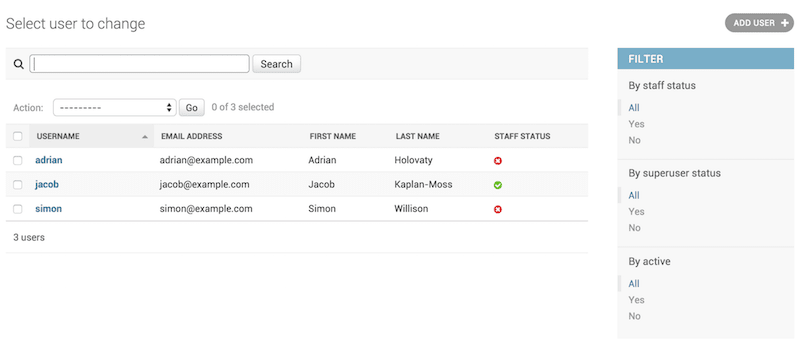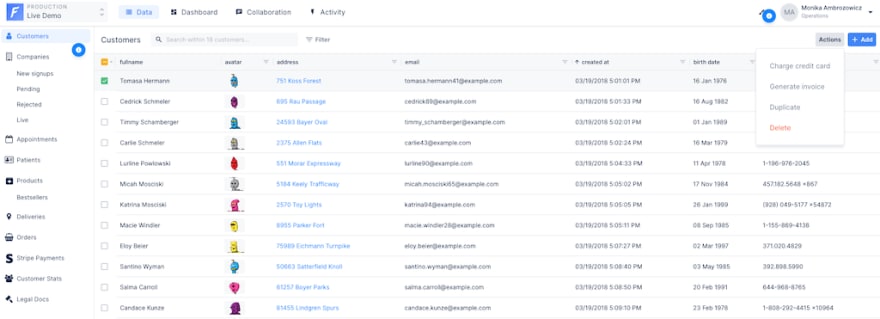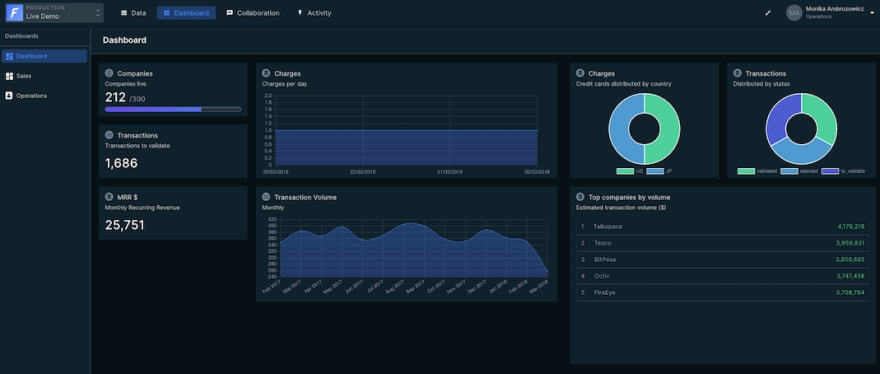28
Forest Admin: Django Admin Alternative
Internal tools are the gateway between products and users despite remaining hidden to the latter. Admin panels, dashboards, and other tools allow administrators to solve customer problems, perform various operations, edit and publish content, ensure data security, and much more.
As they are so important, it shouldn’t come as a surprise that on average, developers spend more than 30% of their time building internal tools, assuming they code everything from scratch. Is it the most efficient way? At Forest Admin we don’t think so as we have witnessed multiple times that an off-the-shelf solution proves to be much more effective. And it’s safe to say that the creators of Django Admin would agree with us, as, quoting the philosophy behind this automatically generated internal tool solution for Django applications:
Generating admin sites for your staff or clients to add, change, and delete content is tedious work that doesn’t require much creativity. For that reason, Django entirely automates creation of admin interfaces for models.
Django was created in a newsroom environment at the Lawrence Journal-World newspaper, and giving site managers the ability to add, edit, and manage content in a way that is easy and as much automated as possible was the priority of its creators. That’s why, they equip the high-level Python web framework with a built-in admin interface that allows for basic CRUD operations, authenticating users, handling forms, managing content, and performing other tasks that are typical for admin panels. Once set up, Django Admin can be widely customized but Django doesn’t recommend using it above the basic organization’s internal management system.
Django Admin is not the only internal tool solution for applications developed in Django. At Forest Admin, we have recently released a Django agent that joins the growing list of data sources that are compatible with Forest Admin, including Ruby on Rails, Node.js, Stripe, PostgreSQL, MySQL, MongoDB, and Microsoft SQL Server.
As a quick reminder, Forest Admin’s architecture is based on API. It consists of four components: the database, the admin backend, the Forest Admin API server, and the Forest Admin UI server. Users’ data is only hosted on their end and the user browser, it never transits through Forest Admin servers. That way, you don’t have to choose between the security and convenience of a SaaS tool - you have both.
To start, you can either generate a Node.js application on your local machine that includes a RESTful API that connects to your database or install Forest Admin using data sources mentioned above, including Django.
Both Django Admin and Forest Admin can be used as ready-to-use internal tool solutions. Django Admin is automatically generated, and Forest Admin can be easily connected to any application. However, both solutions differ in terms of functionalities, UI, security, and other aspects. Let us have a closer look at them.


 Forest Admin UI. Source: Forest Admin Live Demo.
Forest Admin UI. Source: Forest Admin Live Demo.
 Forest Admin UI. Source: Forest Admin Live Demo.
Forest Admin UI. Source: Forest Admin Live Demo.
###Segments
 The dark mode of the Forest Admin UI. Source: Forest Admin Live Demo.
The dark mode of the Forest Admin UI. Source: Forest Admin Live Demo.
 Forest Admin login page
Forest Admin login page
Now, you should have learned enough about both solutions in order to make an informed decision. If you feel like you need more time, answering these questions should steer you to the right direction.
❓ What is the size of my project, and how many people from my team are going to use internal tools?
❓ Do my team members need a WYSIWYG editor or do all of them have tech skills and time to work on internal tools?
❓ Do I need basic CRUD operations or more advanced features?
❓ Will the internal tool scale together with my product and users?
❓ Can I easily find support and documentation if any issues arise?
If you decide to give Forest Admin a try, sign up for free. 🌲🌲🌲 Please keep in mind that our Django agent is currently in beta and we’ll appreciate your feedback!
28
